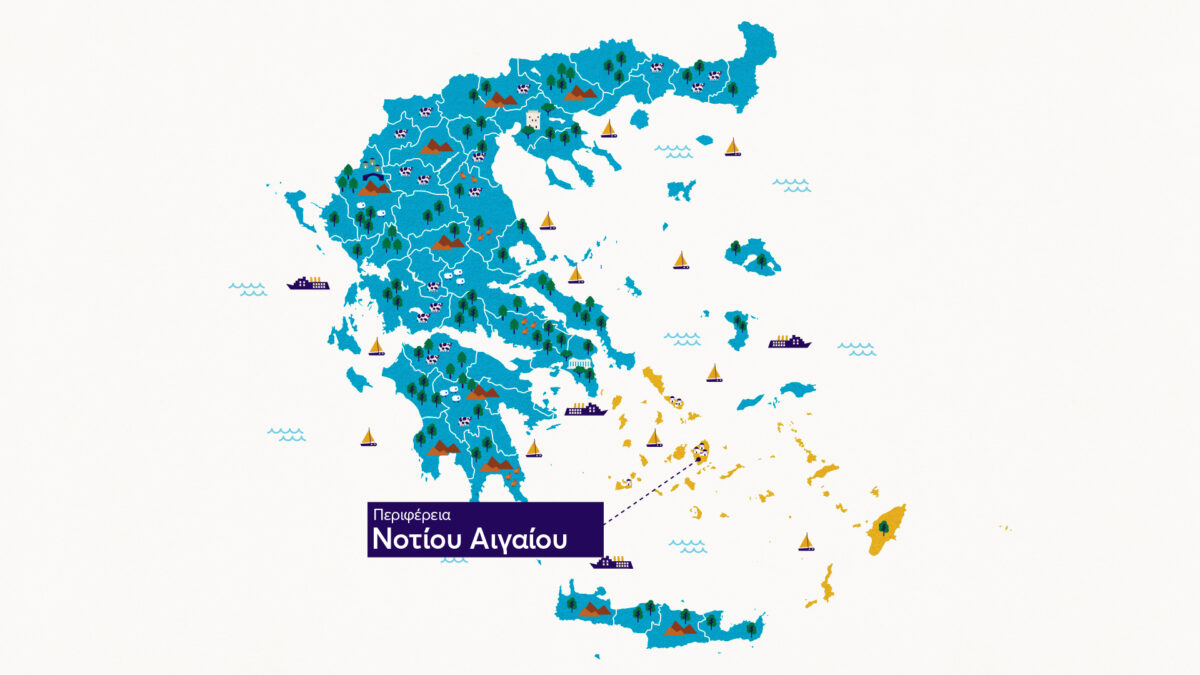The Region of South Aegean is a maritime Region which encompasses the Cyclades and the Dodecanese archipelagos, known world-wide for their popular island destinations.
The Cyclades, with their striking blue and white colour scheme, consist of popular islands such as Amorgos, Anafi, Andros, Antiparos, Delos, Donoussa, Iraklia, Ios, Kimolos, Kea, the Koufonissia, Kythnos, Milos, Mykonos, Naxos, Paros, Santorini, Serifos, Sikinos, Sifnos, Schinoussa, Syros, Tinos and Folegandros. The archipelago is rounded out by a number of other uninhabited isles and island clusters.
The Dodecanese spread across the southeastern Aegean and consist of Agathonisi, Astypalaia, Kalymnos, Karpathos, Kassos, Kastelorizo, Kos, Lipsi, Leros, Nisyros, Patmos, Rhodes, Symi, Tilos and Chalki. In addition to these 15 main inhabited islands, there are various other smaller islands in the Dodecanese. This archipelago is renowned for its medieval castles, its beaches and ancient monuments.
Both the Cyclades and the Dodecanese boast a rich history, having flourished in various periods. The Cyclades gave birth to the Cycladic civilisation, one of Greece’s most famous, while the Dodecanese were controlled at times by the Knights of Saint John, the Ottomans and the Italians, each of which left their mark on the islands and together produced a distinctive mix of cultural elements.
In the modern day, the Southern Aegean is a popular tourist destination, attracting millions of visitors from all over the globe. Known for its beaches, picturesque villages, and traditional architecture, the region also has prominent shipping and fishing industries, while each island maintains its own local traditions and culture.
From cosmopolitan Mykonos and the unique geomorphology of Santorini to the quiet charm of Donoussa and the archaeological wealth of Delos, and from the stately nobility of Rhodes to ‘sacred’ Patmos, visitors will be enchanted by what they see, taking home unforgettable experiences.
Abounding with exceptional raw materials, both the Cyclades and the Dodecanese have a wealth of certified (PDO/PGI) products to show. The local cuisine reflects the region’s history and culture and is characterised by widespread use of olive oil, cheeses, seafood, fish, and legumes, with fava from Santorini being the most prominent example of the latter. Other products used in the local cuisine include honey, cheeses, olives and the native greens found growing throughout the islands. The islands of the Aegean also produce some of Greece’s most well-known and refined wines. Santorini, for example, is famous for its Assyrtiko and Vinsanto varieties, while Kos and Rhodes produce Moschato and Agiorgitiko.
The region is also well known for its traditional confections, made with honey, nuts and fresh fruit. Visitors to Syros, for example, will have the opportunity to sample the famous local loukoumia, bezedes and halvadopites. Meanwhile, Sifnos produces a fine sesame bar (pasteli) with the local thyme honey, and Skyros is known for its amygdalota (a type of macaroon) and its wide variety of spoon sweets.
Each island in this region has its own unique identity and beauty. Visitors to this region will have the opportunity to enjoy the gorgeous beaches, rich history and culture, exceptional local cuisine, unique landscapes with their whitewashed, blue-roofed houses and breathtaking sunsets, and renowned hospitality of the locals, all of which contribute to the Aegean islands’ well-deserved global renown.










